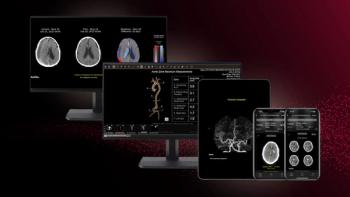
Will energy replace slices as CT battleground?
In the wake of the slice wars, which saw CT scanners boom from four to 320 slices, a new battle will be fought, one focused on energy and spectral imaging. Photon counting, triple- and quad-energy systems, and a new breed of contrast agents are emerging drivers in the development of spectral CT, say some experts in topics scheduled for the Tuesday, May 18, ISCT session on Dual Energy and Spectral Imaging.
In the wake of the slice wars, which saw CT scanners boom from four to 320 slices, a new battle will be fought, one focused on energy and spectral imaging. Photon counting, triple- and quad-energy systems, and a new breed of contrast agents are emerging drivers in the development of spectral CT, say some experts in topics scheduled for the Tuesday, May 18, ISCT session on Dual Energy and Spectral Imaging.
Today’s technology, dual-energy CT, which applies high- and low-power x-rays, is a first step. Willi Kalender, Ph.D., a professor in the Institute of Medical Physics at the University of Erlangen in Germany, will examine how cadmium telluride might allow the next step. Advantages and disadvantages of CdTe detectors, specifically their potential as the means to achieve CT photon counting, will be compared with those of conventional detectors.
Technical challenges will likely give way to multienergy CT systems. Vendors now pursuing photon-counting technologies are separating the x-ray spectrum into different energy levels, so-called “energy bins.” Dr. Jacob Sosna, CT director of research and imaging laboratories at Hadassah Hebrew University Medical Center in Jerusalem, will describe how these early efforts might evolve, presenting information about a prototypical human scanner being developed at the Rabin Medical Center in Israel.
Some pundits believe adoption will come only in specialty systems, such as ones developed for breast CT. Others see their potential in general-purpose scanners that are applied to a wide range of specialty applications. Cardiovascular applications are the leading candidates, such as the diagnosis of pulmonary embolism and assessment of myocardial perfusion. Dr. Jean Louis Sablayrolles, chief of the CT and MRI department of the Centre Cardiologique du Nord in Saint Denis, France, will present initial clinical results using spectral imaging to characterize and visualize blood vessels, pulmonary emboli, and lumen heavily calcified with plaques or repaired using stents. He will also examine how spectral imaging might fit into oncology, specifically the characterization of lesions.
Dual-energy CT might quantify calcium through its ability to overcome a substantial shortcoming of conventional CT. Calcium scoring currently is done without contrast enhancement because iodine and calcium are both radio-opaque and indistinguishable on single-energy CT systems. Sandra Simon Halliburton, Ph.D., a cardiac imaging scientist in the Cardiovascular Imaging Laboratory of the Cleveland Clinics, will present data showing how dual-energy CT might be used to exactly quantify plaque burden by distinguishing calcium from iodine, thereby creating “virtual noncontrast images.”
Newsletter
Stay at the forefront of radiology with the Diagnostic Imaging newsletter, delivering the latest news, clinical insights, and imaging advancements for today’s radiologists.



























